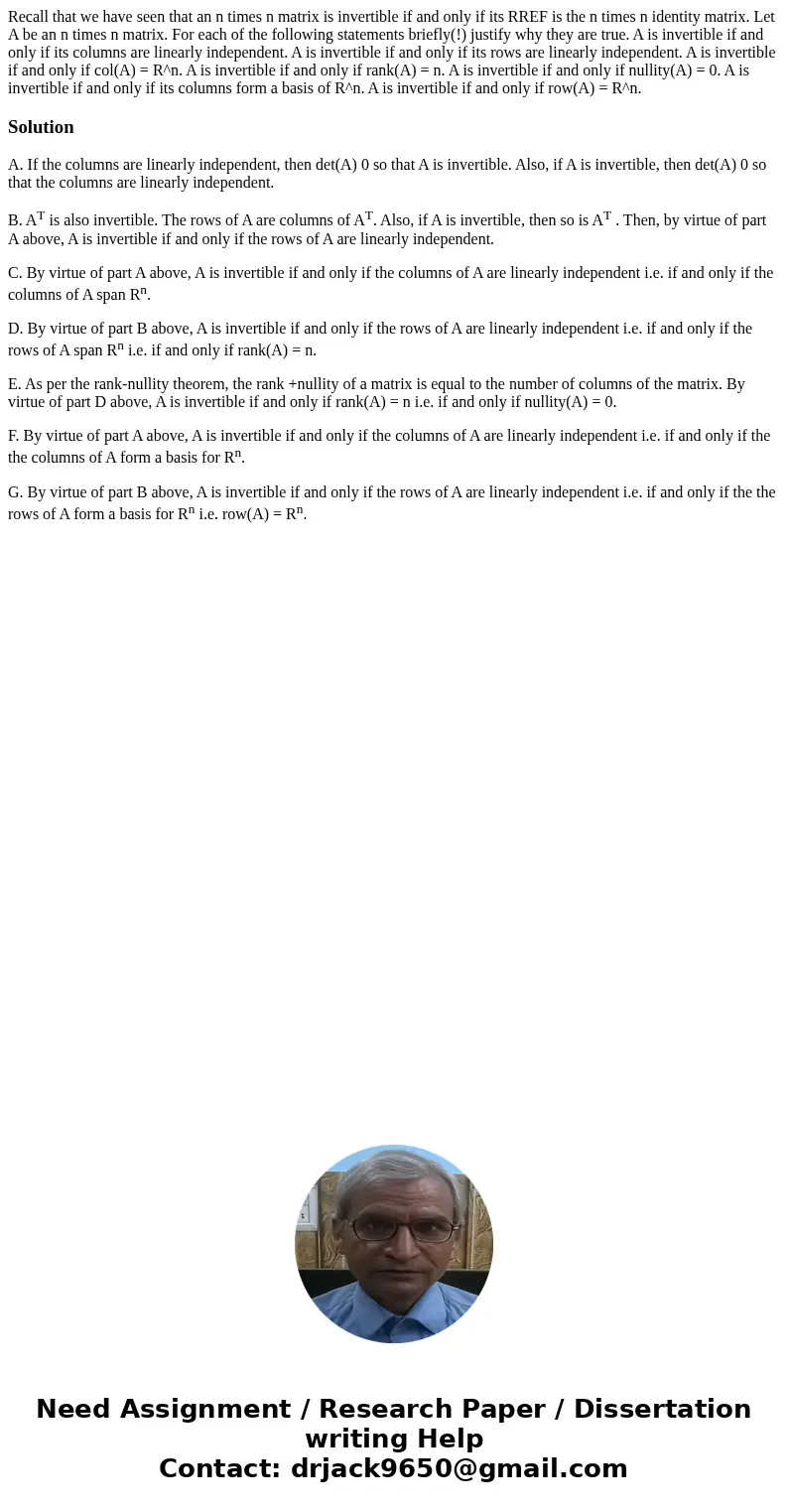Recall that we have seen that an n times n matrix is inverti
Solution
A. If the columns are linearly independent, then det(A) 0 so that A is invertible. Also, if A is invertible, then det(A) 0 so that the columns are linearly independent.
B. AT is also invertible. The rows of A are columns of AT. Also, if A is invertible, then so is AT . Then, by virtue of part A above, A is invertible if and only if the rows of A are linearly independent.
C. By virtue of part A above, A is invertible if and only if the columns of A are linearly independent i.e. if and only if the columns of A span Rn.
D. By virtue of part B above, A is invertible if and only if the rows of A are linearly independent i.e. if and only if the rows of A span Rn i.e. if and only if rank(A) = n.
E. As per the rank-nullity theorem, the rank +nullity of a matrix is equal to the number of columns of the matrix. By virtue of part D above, A is invertible if and only if rank(A) = n i.e. if and only if nullity(A) = 0.
F. By virtue of part A above, A is invertible if and only if the columns of A are linearly independent i.e. if and only if the the columns of A form a basis for Rn.
G. By virtue of part B above, A is invertible if and only if the rows of A are linearly independent i.e. if and only if the the rows of A form a basis for Rn i.e. row(A) = Rn.

 Homework Sourse
Homework Sourse